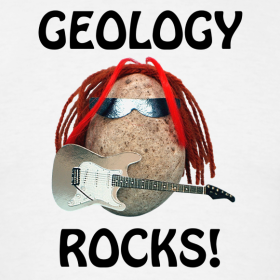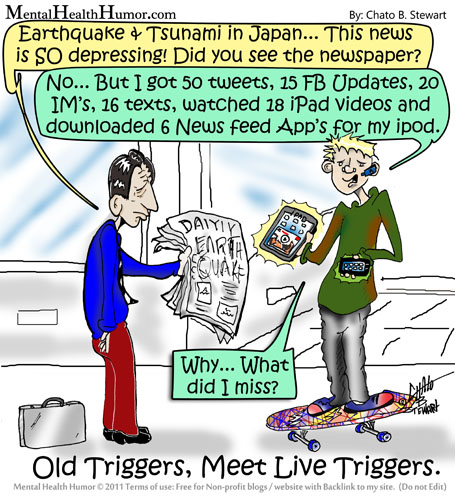This is the fourth part of a series looking at how we should effectively communicate geoscience, based largely on a recent paper by Iain Stewart and Ted Nield. The previous post attempted to address the insanely impossible question of ‘who are the public?’, when it comes to public engagement’. It seems that this is very much a disciplinary issue, each with their own collective suite of hurdles and mountains to climb. The conclusion, I think, was that although identifying various ‘publics’ and sub-categories based on social traits, the use of this is only in identifying some sort of strategic framework for science communication to operate within, when what we really should be doing is ignoring that, and actually going out there and actually doing things. At the recent Festival of Geology in London, I saw kids (and adults!) having a blast playing with robotic trilobites. As a form of communication, I’d say doing practical things like that are infinitely more valuable than discussing which public group the trilobites are trying to commune with (as an example).
This time, let’s have a quick peak at how geology is communicated within the news and mass media (in case you hadn’t realised yet, I’m pretty much systematically breaking down and analysing Stewart and Nield’s paper, as currently it’s stuck behind a paywall and I think it’s contents need unleashing, as they got pretty much everything spot on!)
Most of us probably read the newspaper, watch the news, or are at least aware of current topical issues to some degree. Surprisingly, a study from earlier this year identified that, in terms of newspaper coverage, Earth Science stories were actually ahead of biology and both physics and chemistry combined, after a substantial increase in the last decade (sorry Prof. Cox, geology rocks). It seems that this trend is due to a general public increase in the fascination of deep time, environmental disasters and natural crises (I suspect this is solely a British trend, as we love firstly nothing more than a good old moan about how naff the planet is, and secondly as we always want something we can’t have – the past, in this case).
Despite sounding pretty good on the face of things, what does it actually mean in terms of the effectiveness of geoscientific communication. The agenda of newspapers, and the mass media in general, is not to promote public awareness of scientific issues or education – it’s to sell newspapers and entertain (with the odd exception, of course). The aim of scientists (yea, for we art high and mighty), generally speaking, at least for those who openly communicate and disseminate their knowledge to with the public, is to educate, be scientifically accurate, get public notification for years of dedicated research, and give something back to the people who fund their research (tax dodgers can get stuffed). Sometimes these agendas can be mutually beneficial, and at other times divergent or even in conflict. What really matters though is how we can work within this framework to create something that is good for the general public, irrespective of the agendas of either party (personally, this is why I think science-y blogs are great).
Stewart and Nield highlight several important statistics from another recent survey about the perspective of the media from the geoscientific community. From the surveyed sample, 73% of geoscientists thought that the nature of geoscience issues is understood only by few within the media, and that 72% of respondents thought that the media focused too much on negative stories about geoscience (not about how rocks commit crime, but more along the lines of natural disasters, and possibly including climate change and energy-related issues). With such a clear rift of general trust between scientists and the media, is it any wonder then why collaborative efforts are so scarce, and why the agendas of both parties are so often mis-matched?
The style of journalistic writing typically requires some sort of ‘hook’ to get the public’s attention. Unfortunately, what this can in effect translate to, is either the trivialisation, sensationalisation, or twisting of the scientific actuality to attract attention. As a naive scientist, my response to this would be ‘surely the science is interesting enough to remove the need for this?’, to which the obvious response is, ‘not everyone likes rocks/fossils etc. as much as you’, so it actually seems natural that some sort of hook is needed to reach a wider audience. Often, the case may be that this hook will revolve around some sort of catastrophic event, which of course requires that attention is only given after the event has taken place. No one wants to hear about earthquake prediction, but all of a sudden once an earthquake has happened, it’s front page news everywhere, and all too late to actually change anything. So the question then becomes, how can journalism operate without these hooks to actually increase awareness of issues before they actually happen?
Stewart and Nield provide a rather wonderful quote on this ‘whiplash journalism’ from New York Times journalist Andrew Revkin:
“This approach leaves society like a ship at anchor swinging cyclically with the tides and not going anywhere. What is lost in the swings of media coverage is a century of study and evidence.”
What these media occurrences, typically involving natural disasters, allow is a window of opportunity for a ‘geological expert’ to have their moment in the limelight. I can’t remember the last time, during an earthquake, or any natural disaster in the news, the token geological consultant wasn’t a post-middle-aged bloke wielding a beard and a beer-stained polo-neck t-shirt, wide-rimmed glasses, and a stomach of magnitude 6. They speak for 15 seconds about kinetic pressure, macrotectonics, and then with a blank smile, the reporter moves on. To death tolls. Often the brevity can inevitably lead to misunderstanding, confusion, and the continuing perpetuation that geologists are in fact, still dwelling somewhere in the 1950s.
Stewart and Nield, unsurprisingly, not only hit the nail on the head with the finale paragraph in this section, but follow through by smashing open a tectonic rift of suggested future action. When communicating what are typically inherently complex concepts through the media, include a brief background context that places the latest research or issue within a system of well-established knowledge field. Furthermore, we need a more effective communications strategy that allows reciprocal understanding between scientists and journalists of the news and science agendas, their reconciliation, and how the media frames science in the public vision. As Nield has previously pointed out, the media are a branch of the entertainment industry, and must be treated as such. Success lies with this basic appreciation.
What you get in a scientific papers, is the distillation of unfathomable hours of collective research, backed up by usually a wealth of underlying research. This collective accumulation of incremental knowledge takes a vast amount of time, and an equally vast amount of time in attempting to understand. From an external perspective, the magnitude of such a task is, hopefully, enormous. The tempo and shifts in this knowledge base is more than likely entirely out of sync with an individual’s understanding of it, and therefore when shifts happen, and happen they will (again, see the current issues revolving around fracking), public perception has to first, attempt to make sense of the issue, and secondly reconcile it with their own current understandings. Journalism has to find the balance within this complexity, which may not be an easy task as it is unlikely that journalists will all be experts in geoscientific issues.



